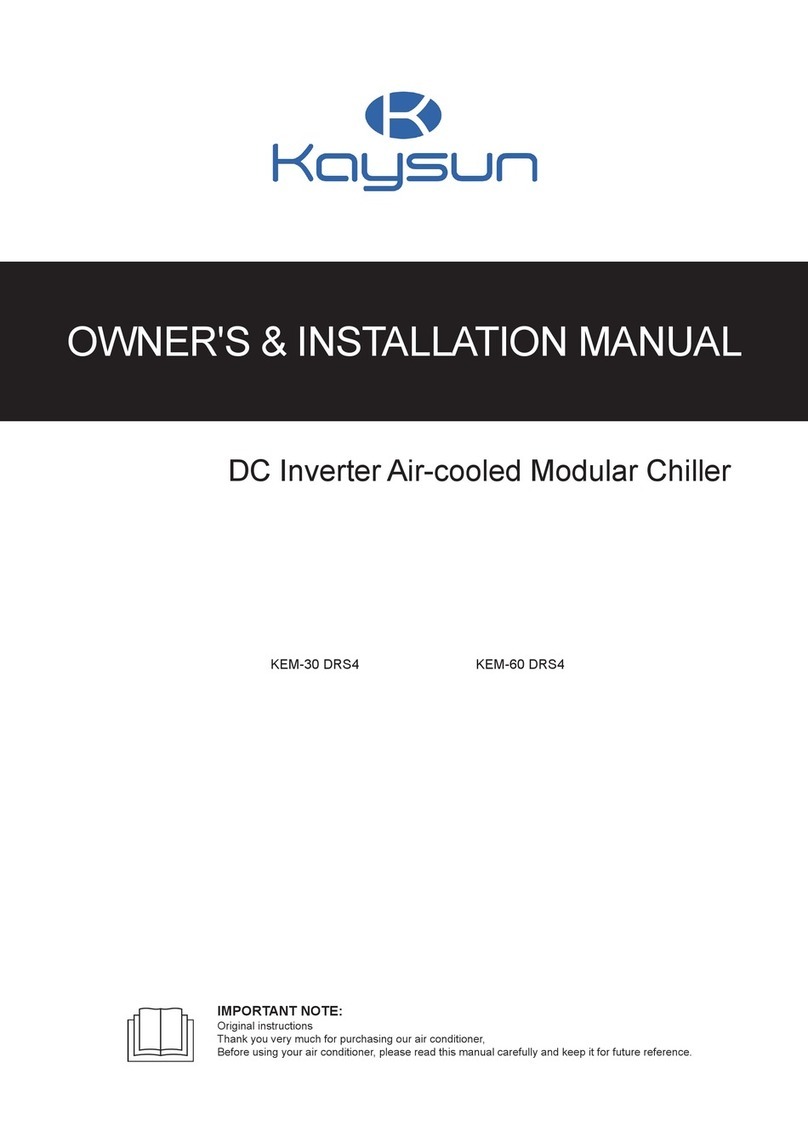
9
Part 1 - General Information
4 System Design And Unit Selection
4.1 Selection Procedure
Step 1: Total heat load calculation
Step 2: System configuration
Step 1: Total heat load calculation
Calculate conditioned surface area
Select the heat emitters (type, quantity, water temperature and heat load)
Decide whether to enable or disable auxiliary electric heater
Determine required total heat load on outdoor units
Set capacity safety factor
Select power supply
Provisionally select Aqua thermal Series unit capacity1 based on nominal
capacity
Correct capacity of the outdoor units for the following items:
Outdoor air temperature / Outdoor humidity / Water outlet temperature2 /
Altitude / Anti-freeze type
Is corrected Aqua thermal capacity ≥ Required total heat load on outdoor
units3
Aqua thermal system
selection is complete
Yes No
Notes:
1. Up to 16 units can be connected together, giving a system cooling/heating capacity range from 90kW to 1440kW.
2. If the required water temperatures of the heat emitters are not all the same, the Aqua thermal’s outlet water temperature setting should be set at the
highest of the heat emitter required water temperatures. If the water outlet design temperature falls between two temperatures listed in the outdoor
unit's capacity table, calculate the corrected capacity by interpolation.
3. Select Aqua thermal which satisfies both total heating and cooling load requirements.




























